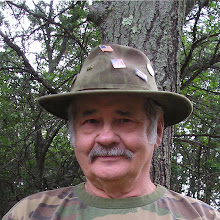Ammo Supply
I do not thing that any two survivalists agree on the amount or type of ammo that should be kept on hand. I have my own ideas and when I tell other survivalists, I usually get told that it is way too much or not nearly enough. That will give you an idea of the different thinking on the subject of ammo. The guidelines that I am going to lay out here are what I consider an all around average. Each person can adjust to what I say according to how much shooting they do, both in practice and in hunting. The figures I work with give ammunition a five year shelf life. I realize that some ammo will last much longer as I have used ammo that was ten and even twenty years old. However, that being said, five years is probably optimal for all ammo. Using the five years figure and the amount of practice that I do and that I recommend, I work out the numbers. So, let us look at some figures and see what you think.
Let us look at the shotgun first. For this I recommend 2,100 rounds. This may sound like a lot, but it really is not. I have gone waterfowl hunting and gone through two boxes in a day, that is fifty rounds. I have also thrown clay targets with my grandsons and gone through five or six boxes in a day, that is 150 rounds. Also, you need to split these rounds up by different types and here is how I would do it. First I would get 1,200 rounds of bird shot, 2s, 4s, 6s and 7 1/2s. I would add 400 rounds of 00 and 000 buckshot. Now add 500 rifled slugs and you have your shotgun shells in order.
Now for the center fire rifle I recommend 2,000 rounds. This is to be your main defense gun and also your hunting rifle. However, I see the shotgun more as a hunting weapon than the center fire rifle. I would probably split the center fire ammo into two different bullet weights. For instance using a 30-06, I would opt for 125 grain and 180 grain bullets. the 125 would be for defense and the 180 for hunting. If you do not intend on doing much hunting with your defense rifle (as I do not) one bullet weight is all you need. Never have more than two bullet weights as remembering point of impact of several bullet weights is rather difficult.
Next we will move on to your handgun. Here I drop down to 1,500 rounds. Here there are so many handguns, both wheelguns and autos that it is hard to say what type of ammo to have as far as bullet weights and whether you want jacketed or hollow point, etc. For instance, if you are a wheelgun fan and have a .357 you may want some jacketed hollow points and some solid lead. You would also do well to have some .38 special ammo on hand for some of your practice. For a .357 you could also add some bird shot and multi-ball loads, but these should be in addition to your 1500 rounds.
When we come to the .22 rimfire it is the hardest one to advise for. If you are like me, the .22 will be the most used weapon in your weapon battery. If you have both a rifle and a handgun you will be using up a lot of ammo if you practice regularly. I do not think that any less than 3,000 rounds should be kept and I might go as high as 5,000 rounds. There are a couple of reasons for the large amount. First, they are the least expensive for practice. Second, in a survival situation they can be used for barter to those dummies that do not have enough. Third, the .22 makes a fair hunting round. And finally fourth, in a pinch, they can be used as a defense round. I would split the ammo this way, two-thirds solid point and the other one-third hollow point all in the long rifle configuration. Make sure you check out the trajectory of both the hollow and solid point as they are different.
By now you may be wondering where the heck am I going to store all of this ammo. I store mine in surplus ammo boxes. I prefer the .50 caliber boxes as they hold a fair amount of ammo and are still not too heavy. If you are going to bury your ammo for safe keeping I would still suggest these boxes, but I would suggest that you take the ammo out of the original boxes and vacuum seal it in good vacuum bags with a label inside of the bag giving the specs and the date it was purchased. Now if the seal on the lid is tight, they are as good as any storage unit you can find. There are many other ways, that is just one that I prefer. If you are not going to bury any of
your ammo, leave it in the original boxes with the date on it or vacuum seal them the same as if you were going to bury them. Rotate your stock by practicing with the oldest ammo first and adding as much as you shoot up in practice.
There you have my plan for ammo. You do not need to purchase it all at once, but get started and keep adding until you get to the ideal. See you next time and in the meantime SURVIVE!!!
Check out my other blog:


0 Comments:
Post a Comment
<< Home